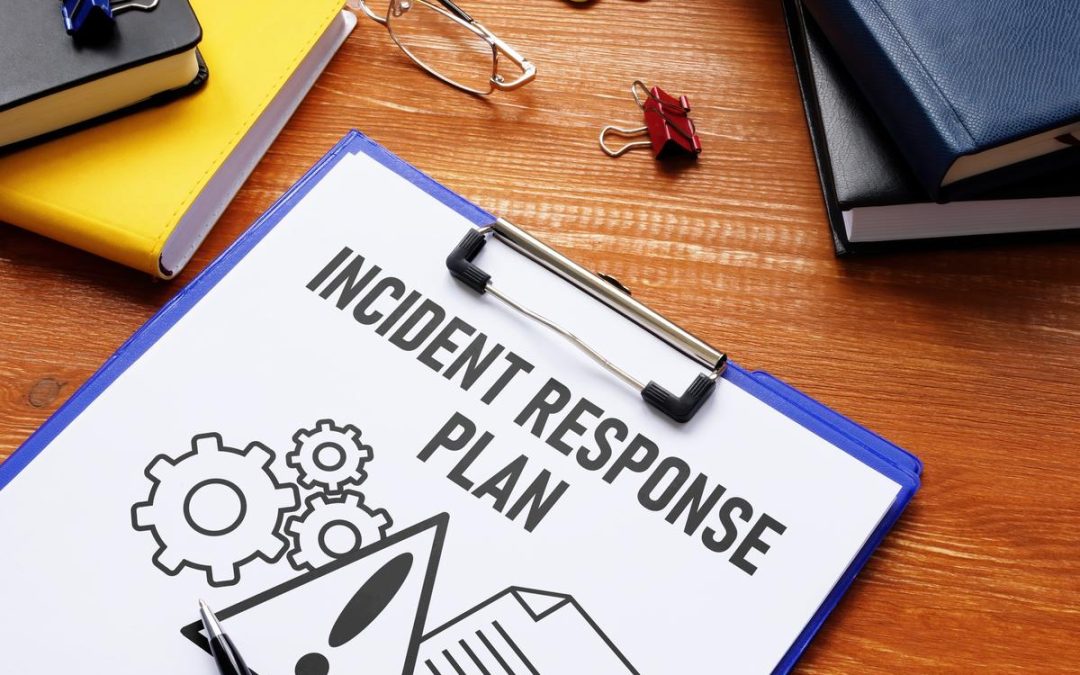-
Step 1: Develop a Comprehensive Incident Response Plan
Creating a detailed plan that details the company’s strategy for responding to incidents is the first step in putting one into action. The plan needs to specify the steps to take in the event of an emergency, who is responsible for what, and how the team will communicate with one another.
The incident response plan should also detail the many potential incidents, their severity levels, and the actions to respond to each. The ever-changing nature of potential dangers facing an organization necessitates that this plan be revisited and revised regularly.
-
Step 2: Establish an Incident Response Team
The next step after creating an incident response strategy is to form an incident response team (IRT). The IRT should be made up of experts in many fields related to incident response, such as information technology (IT) security, law, PR, and top-level management.
When a security event occurs, the incident response team should be in charge of managing the organization’s response and ensuring that the incident response strategy is followed. It is crucial that the IRT be well-trained and up-to-date on the latest threats and vulnerabilities and that each member knows what they are responsible for in the event of an incident.
-
Step 3: Implement a Monitoring and Detection System
Setting up a monitoring and detecting system is the third step in putting an incident response strategy into action. This system should be built to detect potential security incidents in real-time and immediately notify the incident response team. Intrusion detection systems, firewalls, and other preventative security technologies should all be part of the monitoring and detection system.
To keep up with evolving threats and exploits, it’s crucial to test and upgrade your monitoring and detection system regularly. In the case of a security breach, the system must also be linked to the incident response plan.
-
Step 4: Develop a Response Plan for Each Type of Incident
The fourth step in implementing an incident response plan is to create a strategy for dealing with each potential occurrence. Each potential event type should have a section detailing the necessary response steps and assigning those tasks to incident response team members.
The response plan should outline the steps to stop the spread of the problem, find out what caused it, and get things back to normal. Protocols for informing relevant parties of the occurrence and the organization’s response should also be outlined.
-
Step 5: Review and Update the Plan
Incident response plans should be reviewed and updated regularly to ensure that they remain relevant and effective. This step involves regularly reviewing the incident response plan and making changes as necessary based on any new information or insights gained from previous incidents or near-misses. It is also essential to ensure that the plan complies with any new regulatory requirements or industry standards.
The review and update process should be performed at least annually, or more frequently if there have been significant changes to the company’s operations or risk profile. During the review, the response team should provide feedback on the plan’s effectiveness, any challenges faced during past incidents, and any suggested improvements.
-
Step 6: Implement Training and Awareness Programs
Training and awareness programs for all staff are the sixth step in establishing an incident response strategy. The goal of these initiatives should be to train workers to recognize and respond appropriately to cybersecurity threats.
Phishing, social engineering, password management, and safe browsing are just a few areas that should be addressed in training and awareness programs. New vulnerabilities and threats must be consistently incorporated into the training and awareness programs. Security mishaps can be avoided by implementing regular training and awareness programs that raise consciousness about cybersecurity.
-
Step 7: Continuously Monitor and Improve the Incident Response Plan
An incident response plan’s final phase must be constantly monitored and improved. As such, it’s essential to revisit the strategy frequently and make any required adjustments to keep it relevant in the face of ever-evolving risks and flaws.
The best way to find out where the incident response team and other stakeholders may be made more effective is to ask them for input. The effectiveness of an organization’s preparedness to respond to security incidents, and the impact of such incidents, can be maximized through constant monitoring and refinement of the incident response plan.
Conclusion
Implementing a successful incident response plan for construction and trades requires a thorough and systematic approach. The seven steps outlined in this article provide a framework for developing an effective plan, from identifying potential incidents to testing and refining the plan over time.
By following these steps, construction and trades companies can ensure that they are prepared to respond effectively to any incident, minimizing the impact on employees, the environment, and the company’s operations. A well-designed and well-implemented incident response plan is not only essential for safety and compliance but can also help to protect a company’s reputation and financial viability.
Realted Video:

